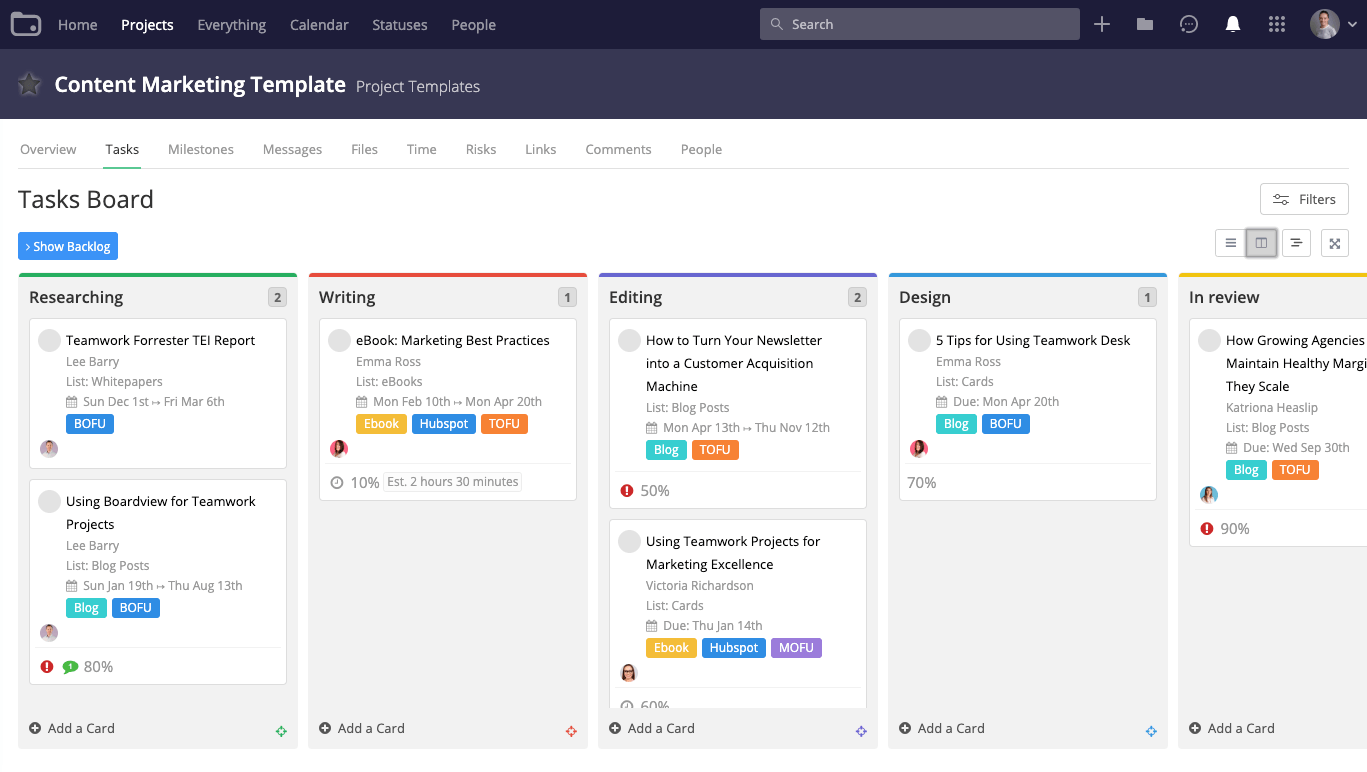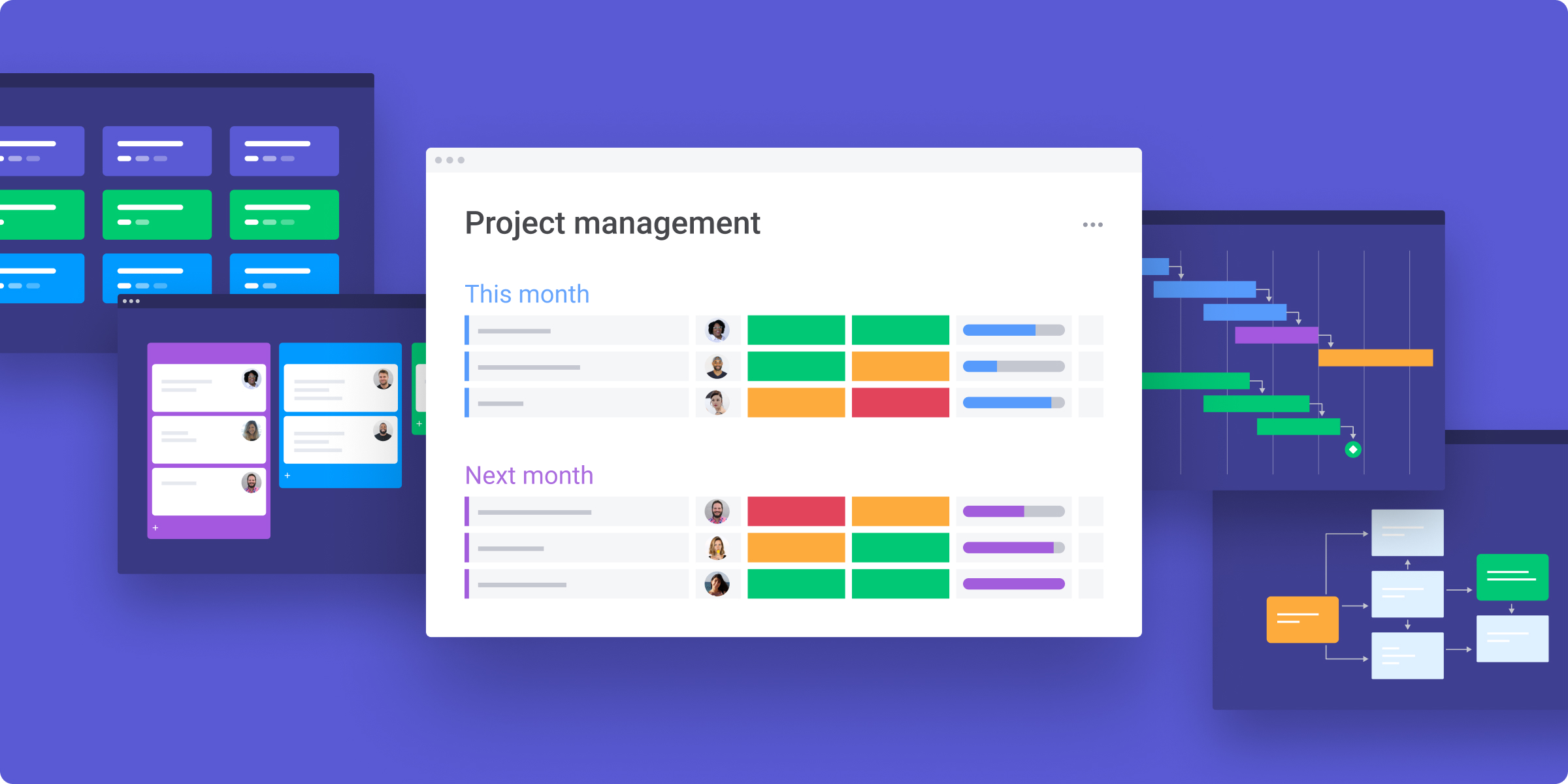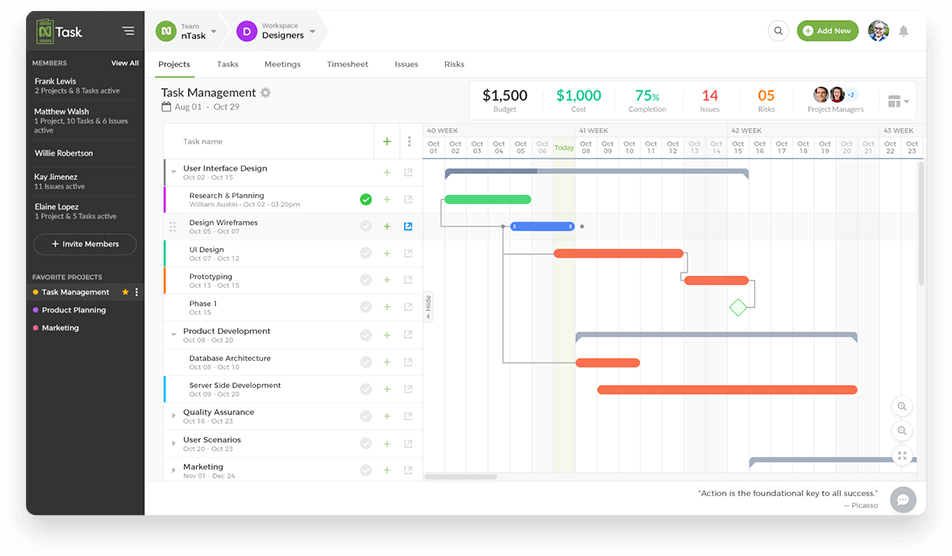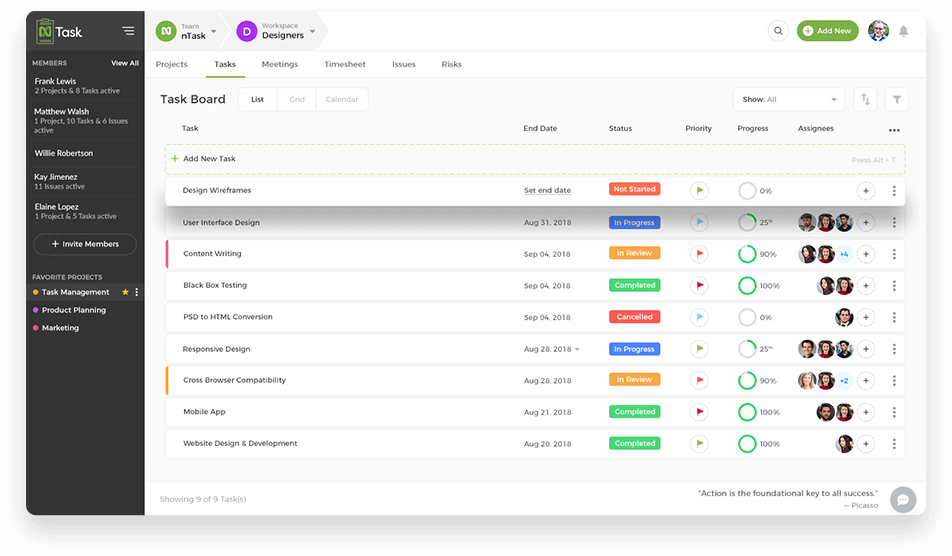Best productivity apps for task management empower individuals and teams to streamline their workflows, maximize productivity, and achieve their goals. These tools offer a myriad of features that cater to diverse task management needs, from simple to-do lists to complex project coordination.
In this comprehensive guide, we will explore the key features to consider when choosing a productivity app, delve into the most popular options available, and provide expert tips for using these tools effectively. We will also discuss advanced features that enhance productivity and explore the latest trends shaping the future of task management apps.
Introduction to Productivity Apps for Task Management

In today’s fast-paced digital world, managing tasks effectively is essential for maximizing productivity and achieving personal and professional goals. Productivity apps for task management have emerged as powerful tools that can streamline workflows, improve organization, and enhance overall efficiency.
These apps come in various forms, from simple to-do list managers to sophisticated project management platforms. They offer a wide range of features and functionalities designed to help users prioritize tasks, set deadlines, track progress, and collaborate with others.
Benefits of Using Productivity Apps
- Improved Task Organization: Productivity apps provide a centralized platform for managing all tasks, reducing the risk of missing important deadlines or forgetting commitments.
- Enhanced Prioritization: These apps allow users to assign priorities to tasks, ensuring that the most critical items receive immediate attention.
- Increased Productivity: By automating repetitive tasks and providing real-time progress updates, productivity apps help users stay focused and achieve more in less time.
- Improved Collaboration: Many productivity apps offer features for team collaboration, enabling seamless task delegation, file sharing, and real-time communication.
- Reduced Stress and Anxiety: By providing a clear overview of tasks and progress, productivity apps can reduce feelings of overwhelm and stress, promoting a sense of control and organization.
Key Features to Consider When Choosing a Productivity App
When selecting a productivity app, it’s crucial to evaluate specific features that align with your needs and workflow. Here’s a comprehensive table outlining key aspects to consider:
| Feature | Description |
|---|---|
| Task Management Capabilities | Assess the app’s ability to organize, prioritize, and track tasks effectively. Look for features like task creation, due dates, reminders, and customizable task lists. |
| Collaboration and Sharing Features | Consider the app’s collaboration capabilities, such as real-time editing, file sharing, commenting, and assigning tasks to team members. |
| Integration with Other Tools and Platforms | Evaluate the app’s ability to integrate with other productivity tools, calendars, email clients, and cloud storage services for seamless workflow. |
| User Interface and Ease of Use | Choose an app with an intuitive user interface that is easy to navigate and understand. Consider the app’s design, functionality, and overall user experience. |
Popular Productivity Apps for Task Management

Productivity apps for task management are essential tools for staying organized and efficient. There are many different options available, each with its own unique features and benefits. Here are a few of the most popular productivity apps for task management:
When choosing a productivity app, there are a few key features to consider:
- Task management features:The app should allow you to create, track, and manage tasks. It should also provide features for prioritizing tasks, setting deadlines, and assigning tasks to others.
- Collaboration features:If you work with others, you’ll need an app that allows you to collaborate on tasks. This may include features for sharing tasks, commenting on tasks, and assigning tasks to others.
- Integration with other tools:If you use other productivity tools, such as email, calendar, or CRM, you’ll want an app that integrates with those tools.
- Price:Productivity apps range in price from free to paid. The price of an app will typically depend on the features it offers.
Trello
Trello is a popular productivity app that uses a kanban board system to organize tasks. Trello boards are divided into columns, which can represent different stages of a project or different categories of tasks. You can create cards to represent tasks and move them between columns as they progress.
Pros:
- Easy to use
- Visual interface
- Collaboration features
- Integrations with other tools
Cons:
- Can be difficult to manage large projects
- Not as many features as some other apps
Asana
Asana is a powerful productivity app that is designed for teams. Asana allows you to create projects, assign tasks, and track progress. It also includes features for collaboration, such as commenting on tasks and sharing files.
Pros:
- Powerful task management features
- Collaboration features
- Integrations with other tools
Cons:
- Can be complex to use
- Not as visual as some other apps
Todoist
Todoist is a simple and easy-to-use productivity app that is perfect for individuals. Todoist allows you to create tasks, set deadlines, and prioritize tasks. It also includes features for collaboration, such as sharing tasks and commenting on tasks.
Pros:
- Simple and easy to use
- Cross-platform support
- Collaboration features
Cons:
- Not as many features as some other apps
- Can be difficult to manage large projects
Microsoft To Do
Microsoft To Do is a free productivity app from Microsoft. Microsoft To Do allows you to create tasks, set deadlines, and prioritize tasks. It also includes features for collaboration, such as sharing tasks and commenting on tasks.
Pros:
- Free
- Easy to use
- Cross-platform support
Cons:
- Not as many features as some other apps
- Can be difficult to manage large projects
Google Tasks
Google Tasks is a free productivity app from Google. Google Tasks allows you to create tasks, set deadlines, and prioritize tasks. It also includes features for collaboration, such as sharing tasks and commenting on tasks.
Pros:
- Free
- Easy to use
- Cross-platform support
- Integrates with other Google products
Cons:
- Not as many features as some other apps
- Can be difficult to manage large projects
Tips for Using Productivity Apps Effectively

Productivity apps can be powerful tools for managing your tasks and staying organized. However, it is important to use them effectively in order to get the most out of them. Here are a few tips:
One of the most important things you can do is to set clear goals and objectives for what you want to achieve. This will help you to prioritize your tasks and focus your efforts on the most important ones.
It is also important to prioritize your tasks and manage your time effectively. This means breaking down your tasks into smaller, more manageable steps and setting deadlines for each step. It can also be helpful to use a to-do list or task manager to keep track of your progress.
Collaboration is another important aspect of using productivity apps effectively. If you are working on a project with others, it is important to be able to share responsibilities and track each other’s progress. Many productivity apps offer features that make it easy to collaborate with others, such as shared calendars, task lists, and file sharing.
Finally, it is important to stay organized and keep track of your progress. This means keeping your tasks organized into folders or projects, and regularly reviewing your progress to make sure you are on track. Many productivity apps offer features that can help you to stay organized, such as task lists, calendars, and notes.
Setting Clear Goals and Objectives
Setting clear goals and objectives is essential for using productivity apps effectively. This will help you to prioritize your tasks and focus your efforts on the most important ones.Here are a few tips for setting clear goals and objectives:
- Start by identifying what you want to achieve. What are your overall goals? What are your specific objectives?
- Once you have identified your goals and objectives, break them down into smaller, more manageable steps.
- Set deadlines for each step. This will help you to stay on track and motivated.
- Review your goals and objectives regularly. Make sure they are still relevant and that you are making progress towards achieving them.
Prioritizing Tasks and Managing Time Effectively
Prioritizing your tasks and managing your time effectively is another important aspect of using productivity apps effectively. This means breaking down your tasks into smaller, more manageable steps and setting deadlines for each step.Here are a few tips for prioritizing your tasks and managing your time effectively:
- Start by identifying your most important tasks. These are the tasks that will have the biggest impact on your goals and objectives.
- Once you have identified your most important tasks, focus your efforts on completing them first.
- Break down your tasks into smaller, more manageable steps. This will make them seem less daunting and more achievable.
- Set deadlines for each step. This will help you to stay on track and motivated.
- Use a to-do list or task manager to keep track of your progress. This will help you to stay organized and focused.
Collaborating with Others and Sharing Responsibilities
Collaboration is another important aspect of using productivity apps effectively. If you are working on a project with others, it is important to be able to share responsibilities and track each other’s progress.Here are a few tips for collaborating with others and sharing responsibilities:
- Start by creating a shared workspace. This will give everyone involved a central place to access files, tasks, and other resources.
- Assign tasks to different team members based on their skills and experience.
- Use a shared calendar to track everyone’s availability and deadlines.
- Use a task manager to track the progress of each task.
- Communicate regularly with your team members to stay on track and resolve any issues.
Staying Organized and Keeping Track of Progress
Finally, it is important to stay organized and keep track of your progress. This means keeping your tasks organized into folders or projects, and regularly reviewing your progress to make sure you are on track.Here are a few tips for staying organized and keeping track of your progress:
- Create a system for organizing your tasks. This could involve using folders, projects, or tags.
- Regularly review your progress. This will help you to identify any areas where you are falling behind and make adjustments as needed.
- Use a productivity app to help you stay organized and on track.
Advanced Features for Enhanced Productivity

Beyond basic task management capabilities, some productivity apps offer advanced features that can further enhance productivity and streamline workflows. These features include:
Project Management Capabilities
Project management features enable users to manage complex projects with multiple tasks, dependencies, and deadlines. These features often include:
- Task organization and tracking
- Collaboration tools for team projects
- Resource allocation and scheduling
- Progress tracking and reporting
Automation and Workflow Management
Automation features allow users to automate repetitive tasks, such as sending reminders, creating tasks, or updating statuses. Workflow management features help users define and manage workflows, ensuring that tasks are completed in the correct order and by the right people.
Analytics and Reporting
Analytics and reporting features provide insights into how users are using the app and where productivity can be improved. These features often include:
- Usage statistics
- Task completion rates
- Team performance metrics
- Customizable reports
By utilizing these advanced features, productivity apps can help users save time, reduce errors, and improve collaboration, ultimately leading to enhanced productivity and streamlined workflows.
Trends and Future of Productivity Apps
The landscape of productivity apps is constantly evolving, driven by advancements in technology and changing user needs. Here are some key trends shaping the future of productivity apps:
Integration with Artificial Intelligence (AI)
AI is rapidly transforming the productivity app landscape, enabling apps to automate tasks, provide personalized recommendations, and enhance user experiences. AI-powered features such as natural language processing (NLP), machine learning (ML), and computer vision are becoming increasingly common in productivity apps, helping users to:
- Automate repetitive tasks, such as scheduling appointments, sending emails, and managing to-do lists.
- Receive personalized recommendations for tasks, projects, and resources based on their preferences and usage patterns.
- Use natural language to interact with apps, making it easier to create tasks, set reminders, and search for information.
Mobile-first Design and Seamless Cross-Platform Functionality
With the increasing popularity of mobile devices, productivity apps are increasingly being designed with a mobile-first approach. This means that apps are optimized for use on smartphones and tablets, providing a seamless and intuitive experience across different devices. Additionally, cross-platform functionality is becoming essential, allowing users to access their tasks, projects, and files from any device, regardless of operating system.
Gamification and Rewards to Encourage User Engagement, Best productivity apps for task management
To make productivity apps more engaging and motivating, many developers are incorporating gamification elements and rewards into their apps. This can include features such as:
- Points and badges for completing tasks and achieving goals.
- Leaderboards and competitions to encourage friendly competition among users.
- Virtual rewards and incentives to motivate users to stay engaged and productive.
Wrap-Up
By leveraging the power of productivity apps for task management, individuals and teams can unlock their full potential, streamline their operations, and achieve greater success. These tools empower users to stay organized, prioritize tasks effectively, collaborate seamlessly, and track their progress towards their goals.
As technology continues to evolve, we can expect even more innovative and sophisticated productivity apps to emerge, further revolutionizing the way we manage our tasks and enhance our productivity.
Question & Answer Hub: Best Productivity Apps For Task Management
What are the key features to look for in a productivity app?
When choosing a productivity app, consider features such as task management capabilities, collaboration and sharing options, integration with other tools, and user interface and ease of use.
Which are the most popular productivity apps for task management?
Some of the most popular productivity apps for task management include Trello, Asana, Todoist, Microsoft To Do, and Google Tasks.
How can I use productivity apps effectively?
To use productivity apps effectively, set clear goals, prioritize tasks, collaborate with others, stay organized, and track your progress.
